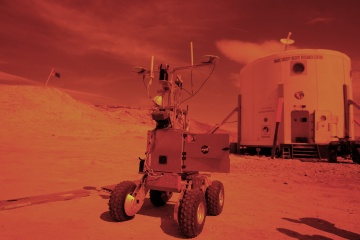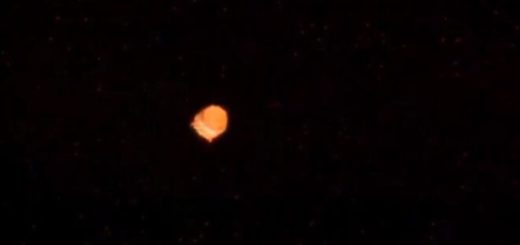How Terraforming Works

One day, like the 30 or so before it, Benjamin Driscoll sowed a bunch of different tree seeds as he trudged across the barren Martian landscape. As Driscoll drifted off to sleep, the rains came. When he awoke, the surface of Mars was covered in trees: “And not little trees, no, not saplings, not little tender shoots, but great trees, huge trees, trees as tall as ten men …”
In the mind of sci-fi author Ray Bradbury, who created Driscoll for the short story “December 2001: The Green Morning,” a story that became part of “The Martian Chronicles,” terraforming was relatively easy. Sprinkle a few seeds here, a few seeds there, and before you know it, the rains come and a biosphere explodes in green rapture.
In the real universe, the process of making a hostile and alien environment into one suitable for human life is much more complicated. Still, that hasn’t stopped scientists from researching different ways — some really out of this world — to create Earth-like environments on other planets, asteroids and moons.
The reason is simple: If we humans are to shake off our earthly shackles to explore the vastness of the universe, we’ll have to find ways of creating ports of call from one end of infinity to the other. One way to do this is to tinker with an alien-world’s environment and make it livable for human space travelers. It’s a process called terraforming. As you read these words, scientists are trying to figure out mechanisms to create sources of oxygen, water and plant life in order to engineer a suitable human habitat on such foreign worlds. They’re engaged in this effort because, after all, Earth won’t be around forever [sources: NASA].
Living and working on other planets has been a dream of humans since we started gazing up into the firmament. Many people have longed to create bases on the moon, as well as Mars and other planets. It’s not such a far-fetched idea. While it’s one thing to build bases on an alien world — heck, they do it all the time on “Star Trek” — it’s quite another to terraform an entire planet.
First, we must find a so-called biocompatible planet, which already has the necessary building blocks for life. That’s pretty much what NASA has been trying to do for decades as various spacecraft, including a fleet of Martian rovers, look for water, carbon and oxygen on alien landscapes. The agency also has been keeping an eye out for promising exoplanets, courtesy of Kepler and the like.
To jump-start the terraforming process, we might have to seed the planet with bacteria and other organisms [source: University of Maryland]. And if we wanted really to speed things up, we could use cyanobacteria to produce oxygen. These little cafeterias can make their own lunches and dinners in extreme; they wouldn’t have to rely on an alien world for food. These tiny critters helped to create an oxygen-rich environment on Earth beginning some 3.5 billion years ago. Just how long this would take on another planetary body is anyone’s guess.
Once terraforming began, cyanobacteria would speed up the process as conditions approached that of Earth. Eventually the planet would get to the point where it was possible to plant vegetation on the surface, which also would hasten the production of life-sustaining oxygen. When the time was right, we could even build an interstellar Noah’s ark and drop animals on to the surface [source: University of Maryland].



 Creators of mankind
Creators of mankind Description of “Tall white aliens”
Description of “Tall white aliens” Where they came from?
Where they came from? About hostile civilizations
About hostile civilizations The war for the Earth
The war for the Earth “Tall white aliens” about eternal life
“Tall white aliens” about eternal life Video: “Nordic aliens”
Video: “Nordic aliens” Aliens
Aliens Alien encounters
Alien encounters The aliens base
The aliens base UFO
UFO Technology UFO
Technology UFO Underground civilization
Underground civilization Ancient alien artifacts
Ancient alien artifacts Military and UFO
Military and UFO Mysteries and hypotheses
Mysteries and hypotheses Scientific facts
Scientific facts


















